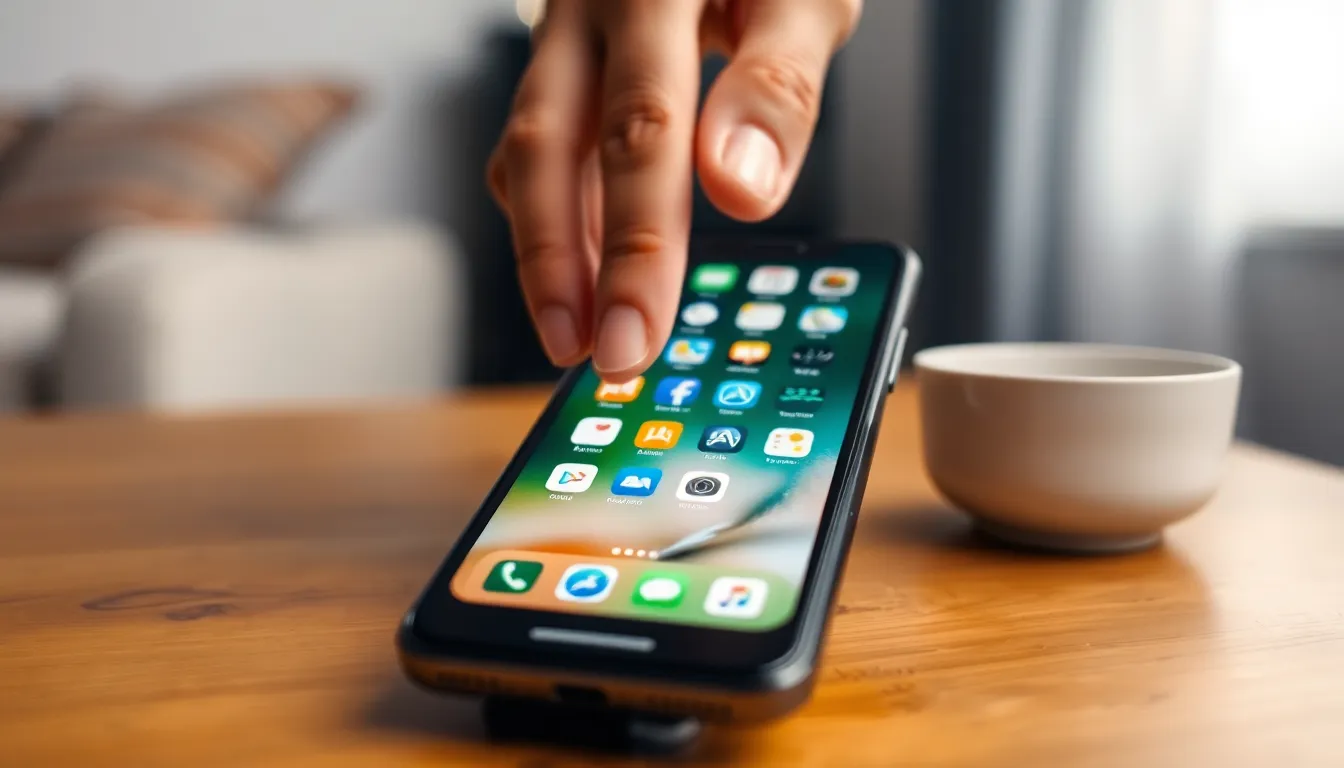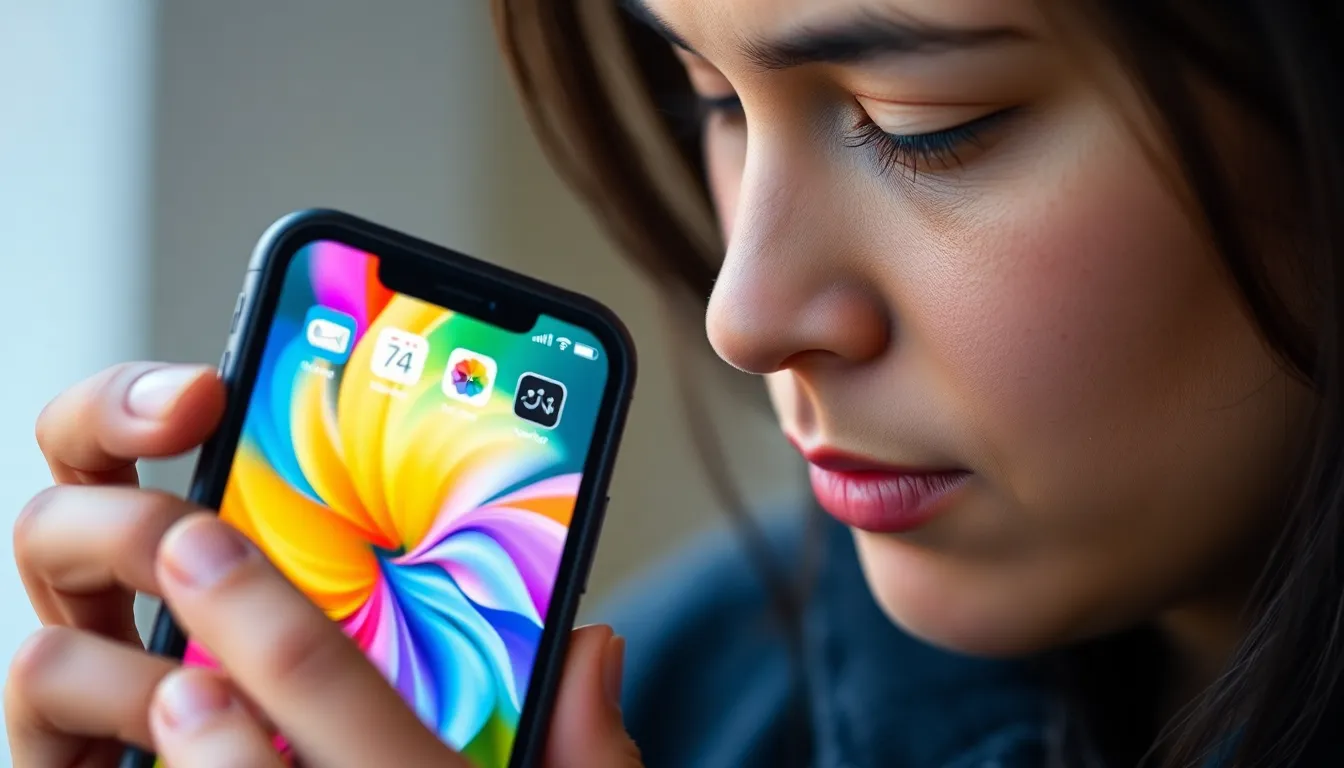Unlocking the mysteries of your iPhone can feel like trying to decipher ancient hieroglyphics. One moment you’re swiping away, and the next, you’re staring at your lock screen, wondering why it feels like a fortress. If the constant interruptions are driving you bonkers, it’s time to take charge and learn how to turn that pesky lock screen off.
Table of Contents
ToggleUnderstanding Lock Screen Settings
Understanding lock screen settings helps users navigate their iPhone more efficiently. Familiarity with these options allows control over notifications and security features.
Importance of Lock Screen
Lock screens serve multiple essential functions. They protect personal data through security measures such as passcodes or biometrics. Notifications appear on the lock screen, allowing users to see important updates without unlocking their devices. Customization options enable users to personalize their experience, choosing wallpaper, widgets, or shortcuts. Convenience remains a top priority, as quick access to essential apps or information enhances usability.
Differences Between iPhone Models
Various iPhone models feature different lock screen capabilities. Older models may lack Face ID, relying solely on passcodes or Touch ID. Newer iPhones offer dynamic lock screens, including customizable widgets and interactive notifications. Compatibility affects how users interact with the lock screen, especially for features like Always-On display. Knowing these differences assists users in maximizing their device’s functionality. Specific settings may vary, reflecting hardware capabilities and iOS versions.
Steps to Turn Off Lock Screen

Disabling the iPhone lock screen provides more seamless access to apps and settings. This section outlines the methods for achieving that.
Using Settings App
Accessing the Settings app is the most straightforward method. Open the app and scroll down to the “Display & Brightness” section. Toggle off the “Auto-Lock” feature to prevent the device from locking automatically. Adjust the Auto-Lock setting to “Never” if looking to maintain an always-on display. This action allows notifications and apps to remain visible without interruptions. However, users should remain cautious about security risks associated with leaving the device unlocked.
Alternative Methods
Enabling screen time restrictions offers another way to modify the lock screen behavior. Go to the Settings app and select “Screen Time.” Choose “Always Allowed” to keep essential apps accessible. Consider using the “Guided Access” feature, which maintains an active session in a single app. This feature limits access to other functions temporarily, preventing accidental lock screen interruptions. Finally, users can also adjust wallpaper settings for personalization and ease of access, allowing for a better interaction experience without constant lock screen interruptions.
Troubleshooting Common Issues
Users can encounter various obstacles when turning off the lock screen on their iPhones. Some struggle to locate the Auto-Lock feature within the Settings app, while others may unintentionally overlook the option. Stress may arise from various model differences which affect the available features. Ensuring the user understands the current iOS version helps clarify settings. Phrase instructions carefully and consider any accessibility settings that may confuse options.
Facing Difficulties in Turning Off
Experiencing difficulty turning off the lock screen often results from unfamiliarity with settings. Users may find that their Auto-Lock settings revert unexpectedly. They might benefit from double-checking whether changes saved from previous attempts. Some users may need to disable features like Screen Time or Guided Access that interfere with their preferences. Confusion often comes when model differences impact navigation. To ease the process, comprehensive guides can provide step-by-step instructions tailored to specific iPhone models.
Resetting Settings
Resetting settings on an iPhone can help manage persistent lock screen issues. Users should navigate to the Settings app, then select General. Following this, they’ll find Transfer or Reset iPhone. Opting for Reset All Settings retains data while restoring original configurations. This option can resolve glitches affecting the lock screen functionality. Always remind users that a reset does not remove apps or personal data, but it may affect Wi-Fi passwords and wallpaper settings. After performing this step, users can reconfigure their lock screen to fit their desired accessibility and customization preferences.
Tips for Managing Lock Screen
Managing the lock screen offers users a blend of security and personalization options. Understanding how to make adjustments enhances the overall iPhone experience.
Customizing Lock Screen Appearance
Adjusting the lock screen appearance includes selecting wallpapers and widgets. Users can personalize these features through the Settings app. Custom wallpapers might reflect personal interests or moods. Widgets, available on newer iPhone models, provide quick access to essential information, like weather updates or calendar events. Changing these settings keeps the lock screen fresh and engaging. Notifications can also be customized for priority viewing, allowing users to see crucial alerts immediately. Exploring these options increases satisfaction with the device.
Security Considerations
Maintaining security is critical when managing the lock screen. While turning off Auto-Lock increases convenience, it exposes the device to potential risks. Users should consider their environment and assess if their data is at risk when the device remains unlocked. Utilizing Face ID or Touch ID strengthens security while enabling easy access. Remember to enable features like Find My iPhone to recover lost devices. Consistent evaluation of security settings ensures personal information remains protected. Balancing convenience and security creates an optimal use experience.
Managing the iPhone lock screen can significantly enhance user experience. By effectively disabling the lock screen feature users can enjoy uninterrupted access to apps and notifications. Customizing the lock screen allows for a more personalized touch while maintaining essential security measures.
It’s crucial to find the right balance between convenience and protection. Utilizing features like Face ID or Touch ID alongside personalized settings ensures that devices remain secure. With the right adjustments users can navigate their iPhones with ease while keeping their data safe. Embracing these tips helps users make the most out of their iPhone experience.




